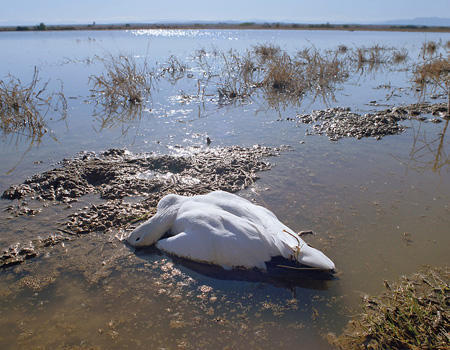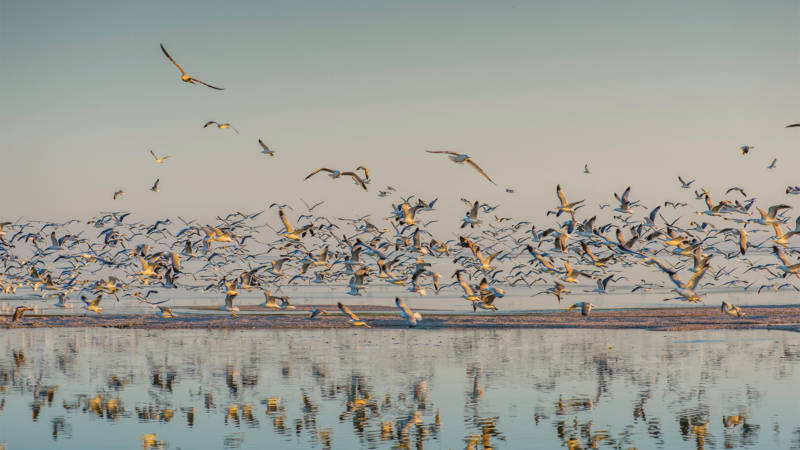Thousands of birds were discovered dead at the Salton Sea last month, raising new concerns about the lake's declining health.
California Department of Fish and Wildlife workers cleaned up the carcasses at the Sonny Bono Salton Sea National Wildlife Refuge after hunters initially reported the gruesome bird die-off. More than 400 species of birds use the Salton Sea’s wetlands as a stop along the Pacific flyway for migratory birds.
The man-made Salton Sea is receiving less and less water from agricultural runoff and the Colorado River, causing it to shrink dramatically. Andrea Jones, director of bird conservation for Audubon California, said the birds fell victim to avian cholera, a contagious disease, due to overcrowding.

(greetingsfromthesaltonsea.com)
“Thousands of birds died in a couple-week stretch from a disease that is not entirely uncommon for birds, particularly ducks or geese when they crowd into situations instead of having a lot of habitat,” Jones said.
The shrinking sea leaves less habitat for migratory birds, which leads to them being concentrated in small areas, according to Tim Krantz, a professor of environmental studies at the University of Redlands and a renowned expert on the Salton Sea.
“If there are some diseased individuals and then they get concentrated just beak-to-beak, wing-to-wing, they're so crowded on the fields and then the water, at the south end particularly, then that is the place where the contagion is going to manifest itself,” Krantz said.

